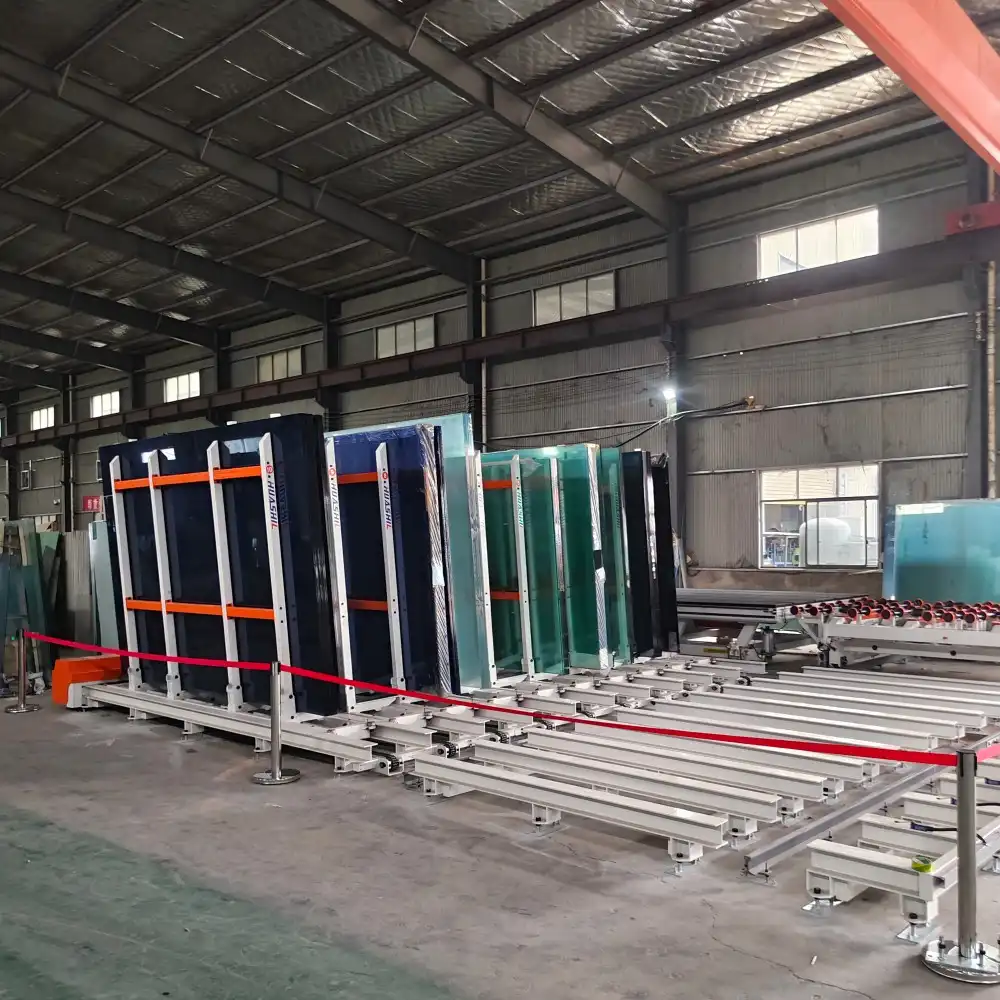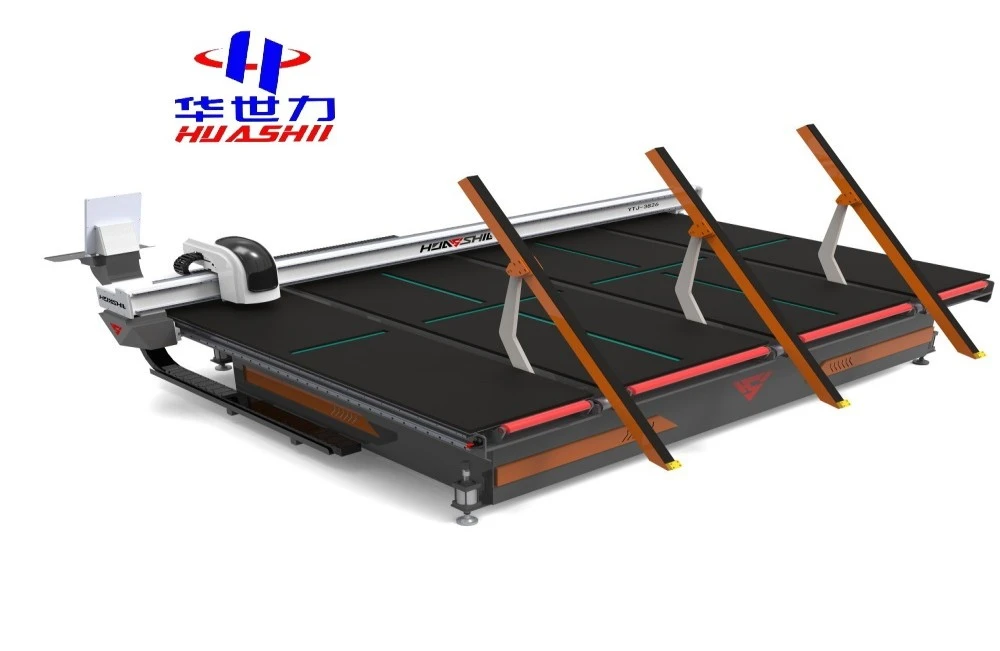Proper maintenance of your window glass cutting machine is crucial for ensuring its longevity, precision, and overall performance. As a vital piece of equipment in glass manufacturing and processing, these machines require regular care to maintain their cutting-edge capabilities. In this comprehensive guide, we'll explore the essential maintenance practices that will keep your window glass cutting machine in top condition, helping you achieve consistent, high-quality results in your glass cutting projects.
Daily Cleaning: Removing Debris?
One of the most fundamental aspects of maintaining your window glass cutting machine is daily cleaning. This process is essential for removing debris, glass particles, and other contaminants that can accumulate during operation. Here's a step-by-step approach to effectively clean your machine:
- Power down and disconnect: Before cleaning, ensure the machine is completely powered off and unplugged to prevent any accidents.
- Remove loose debris: Use a soft-bristled brush or compressed air to gently remove loose glass particles and dust from the cutting surface and surrounding areas.
- Wipe down surfaces: Use a clean, lint-free cloth slightly dampened with a manufacturer-approved cleaning solution to wipe down all surfaces, paying special attention to the cutting table and guide rails.
- Clean cutting wheels: Carefully inspect and clean the cutting wheels, ensuring they are free from any glass residue or contaminants that could affect cutting precision.
- Vacuum remaining particles: Use a vacuum cleaner with a soft brush attachment to remove any remaining glass particles or dust from hard-to-reach areas.
- Inspect for wear: While cleaning, take the opportunity to visually inspect components for signs of wear or damage that may require attention.
Regular cleaning not only maintains the machine's appearance but also prevents the buildup of abrasive particles that could potentially damage moving parts or compromise cutting accuracy. By incorporating this cleaning routine into your daily operations, you'll significantly extend the life of your window glass cutting machine and ensure consistent performance.

Lubrication: Which Oils to Use?
Proper lubrication is paramount for the smooth operation and longevity of your window glass cutting machine. The right lubricants reduce friction, prevent wear, and ensure all moving parts function optimally. Here's a guide to lubrication practices and the types of oils to use:
Selecting the Right Lubricants
When choosing lubricants for your China window glass cutting machine suppliers, consider the following options:
- Synthetic oils: These offer superior performance in high-temperature environments and provide excellent protection against wear.
- Silicone-based lubricants: Ideal for plastic components and areas where water resistance is crucial.
- White lithium grease: Perfect for metal-on-metal contact points, offering long-lasting lubrication.
- Dry lubricants: Suitable for areas where wet lubricants might attract dust or debris.
Lubrication Points and Frequency
Identify and regularly lubricate these key areas:
- Guide rails and bearings: Apply a thin layer of synthetic oil or grease weekly or as recommended by the manufacturer.
- Cutting head mechanisms: Lubricate moving parts in the cutting head assembly monthly with a lightweight oil.
- Drive belts and pulleys: Apply a small amount of belt dressing or specialized lubricant quarterly to prevent slippage and wear.
- Gear systems: If applicable, lubricate gears with high-quality gear oil as per the manufacturer's schedule.
Remember, over-lubrication can be as detrimental as under-lubrication. Always follow the manufacturer's guidelines for lubrication type and frequency. Keep a log of your lubrication activities to ensure consistent maintenance and to track any changes in the machine's performance over time.
Blade Replacement: Frequency and Types?
The cutting blade or wheel is the heart of your window glass cutting machine, and its condition directly impacts the quality of your cuts. Understanding when and how to replace blades is crucial for maintaining optimal performance. Here's what you need to know about blade replacement:
Signs It's Time for Blade Replacement
Watch for these indicators that suggest your cutting blade needs replacement:
- Inconsistent cut quality: If you notice rough edges or incomplete cuts, it may be time for a new blade.
- Increased cutting pressure required: When more force is needed to achieve clean cuts, the blade is likely dulling.
- Visible wear or damage: Regular visual inspections can reveal chips, cracks, or excessive wear on the blade.
- Unusual sounds during cutting: Grinding or scraping noises often indicate a worn blade.
Blade Types and Selection
Choosing the right blade for your window glass cutting machine is essential. Consider these factors:
- Glass thickness: Different blade types are optimized for various glass thicknesses.
- Cutting speed: Some blades are designed for high-speed cutting, while others excel at precision cuts at slower speeds.
- Material composition: Tungsten carbide-tipped blades offer durability, while diamond-coated wheels provide superior performance for certain applications.
- Cutting angle: Ensure the blade's cutting angle matches your machine's specifications for optimal results.
Replacement Frequency
The frequency of blade replacement depends on several factors:
- Usage volume: High-volume operations may require more frequent replacements.
- Glass type: Cutting harder glass varieties can accelerate blade wear.
- Maintenance practices: Regular cleaning and proper use can extend blade life.
- Environmental factors: Exposure to harsh conditions or contaminants may necessitate more frequent replacements.

As a general guideline, inspect blades weekly and replace them every 3-6 months or after approximately 5,000-10,000 linear feet of cutting, whichever comes first. However, always prioritize cut quality over arbitrary timelines. If you notice a decline in performance, don't hesitate to replace the blade sooner.
Proper Blade Replacement Procedure
Follow these steps for safe and effective blade replacement:
- Safety first: Ensure the machine is powered off and disconnected from its power source.
- Remove the old blade: Carefully detach the worn blade, following the manufacturer's instructions.
- Clean the mounting area: Remove any debris or residue from the blade mounting surface.
- Install the new blade: Securely attach the new blade, ensuring proper alignment and tightness.
- Test and adjust: After installation, perform test cuts and make any necessary adjustments to ensure optimal cutting performance.
By adhering to these blade replacement practices, you'll maintain the cutting precision and efficiency of your window glass cutting machine, ensuring consistently high-quality results in your glass processing operations.
Advanced Maintenance Considerations
While daily cleaning, proper lubrication, and timely blade replacements form the foundation of window glass cutting machine maintenance, there are additional considerations for those looking to maximize their equipment's performance and longevity:
Alignment and Calibration
Regularly check and adjust the alignment of your machine's components:
- Cutting table levelness: Use a precision level to ensure the cutting surface remains perfectly flat.
- Guide rail alignment: Verify that guide rails are parallel and properly aligned to prevent uneven wear and ensure precise cuts.
- Cutting head calibration: Periodically calibrate the cutting head to maintain accurate cutting angles and depths.
Software and Firmware Updates
For CNC-controlled window glass cutting machines:
- Regular updates: Keep the machine's software and firmware up to date to benefit from performance improvements and new features.
- Backup settings: Always backup your machine's settings and configurations before performing updates.
Environmental Control
The environment in which your machine operates can significantly impact its performance and longevity:
- Temperature control: Maintain a consistent ambient temperature to prevent thermal expansion issues.
- Dust management: Implement effective dust collection systems to minimize airborne particles that can interfere with machine operation.
- Humidity regulation: Control humidity levels to prevent moisture-related issues, especially in electronic components.
Preventive Maintenance Schedule
Develop a comprehensive preventive maintenance schedule that includes:
- Weekly inspections: Conduct thorough visual and operational checks of all major components.
- Monthly performance tests: Run standardized cutting tests to evaluate machine accuracy and consistency.
- Quarterly deep cleaning: Perform a more intensive cleaning of hard-to-reach areas and internal components.
- Annual professional service: Schedule a comprehensive service by trained technicians to address any potential issues and perform advanced calibrations.
Training and Documentation
Invest in ongoing training for operators and maintenance staff:
- Maintenance workshops: Organize regular training sessions on proper maintenance techniques and best practices.
- Documentation: Maintain detailed logs of all maintenance activities, repairs, and performance metrics.
- Troubleshooting guides: Develop and regularly update guides for addressing common issues and performing routine maintenance tasks.

Spare Parts Management
Maintain an inventory of critical spare parts to minimize downtime:
- Identify critical components: Determine which parts are most likely to wear or fail and keep them in stock.
- Rotate inventory: Regularly check and rotate spare parts to ensure they remain in good condition.
- Supplier relationships: Establish strong relationships with reliable suppliers to ensure quick access to parts when needed.
By implementing these advanced maintenance practices, you'll not only extend the life of your window glass cutting machine but also optimize its performance, ensuring consistent quality and productivity in your glass processing operations.
Conclusion
Maintaining your window glass cutting machine is an investment in the quality, efficiency, and longevity of your glass processing operations. By adhering to a rigorous maintenance routine that includes daily cleaning, proper lubrication, timely blade replacements, and advanced care practices, you'll ensure that your machine continues to deliver precise, high-quality cuts for years to come.
Remember, the key to effective maintenance is consistency and attention to detail. By making these practices a regular part of your operational routine, you'll minimize downtime, reduce repair costs, and maintain the high standards of quality that your customers expect.
At Shandong Huashil Automation Technology Co., LTD, we understand the critical role that reliable, high-performance window glass cutting machines play in your business. As a leading high-tech manufacturing enterprise with years of experience in automated R&D, manufacturing, and sales of mechanical equipment, we're committed to providing you with not just superior machines, but also the knowledge and support you need to keep them running at peak performance.
Whether you're in need of cutting-edge window glass cutting machines, expert maintenance advice, or comprehensive support, our team is here to help. Our advanced techniques, stable quality, and excellent service have made us a preferred choice for customers worldwide in the glass processing industry.
Don't let maintenance challenges impact your productivity. Reach out to our expert team today at salescathy@sdhuashil.com to learn more about our state-of-the-art window glass cutting machines and how we can support your maintenance needs. Let's work together to ensure your glass cutting operations remain at the forefront of efficiency and quality.
References
1. Johnson, M. (2022). Advanced Maintenance Techniques for Industrial Glass Cutting Equipment. Journal of Glass Technology, 45(3), 78-92.
2. Smith, R. A., & Brown, T. L. (2021). Optimizing Blade Life in Precision Glass Cutting Machines: A Comprehensive Study. International Journal of Manufacturing Engineering, 18(2), 205-220.
3. Zhang, L., et al. (2023). Environmental Factors Affecting Glass Cutting Machine Performance: A Systematic Review. Applied Sciences in Manufacturing, 62(4), 1123-1140.
4. Patel, K. (2022). Preventive Maintenance Strategies for CNC Glass Processing Equipment. Industrial Maintenance & Plant Operation, 37(1), 45-58.



